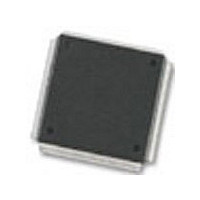MC68376BAMFT20 Freescale Semiconductor, MC68376BAMFT20 Datasheet - Page 67

MC68376BAMFT20
Manufacturer Part Number
MC68376BAMFT20
Description
Manufacturer
Freescale Semiconductor
Datasheet
1.MC68376BAMFT20.pdf
(434 pages)
Specifications of MC68376BAMFT20
Cpu Family
68K/M683xx
Device Core
ColdFire
Device Core Size
32b
Frequency (max)
20MHz
Interface Type
QSPI/SCI
Program Memory Type
ROM
Program Memory Size
8KB
Total Internal Ram Size
7.5KB
# I/os (max)
18
Number Of Timers - General Purpose
2
Operating Supply Voltage (typ)
5V
Operating Supply Voltage (max)
5.25V
Operating Supply Voltage (min)
4.75V
On-chip Adc
16-chx10-bit
Instruction Set Architecture
RISC
Operating Temp Range
-40C to 125C
Operating Temperature Classification
Automotive
Mounting
Surface Mount
Pin Count
160
Package Type
PQFP
Lead Free Status / Rohs Status
Not Compliant
Available stocks
Company
Part Number
Manufacturer
Quantity
Price
Company:
Part Number:
MC68376BAMFT20
Manufacturer:
FREESCAL
Quantity:
245
- Current page: 67 of 434
- Download datasheet (7Mb)
4.8.2.3 Loop Mode Instruction Execution
4.9 Exception Processing
4.9.1 Exception Vectors
MC68336/376
USER’S MANUAL
The CPU32 has several features that provide efficient execution of program loops.
One of these features is the DBcc looping primitive instruction. To increase the perfor-
mance of the CPU32, a loop mode has been added to the processor. The loop mode
is used by any single word instruction that does not change the program flow. Loop
mode is implemented in conjunction with the DBcc instruction. Figure 4-7 shows the
required form of an instruction loop for the processor to enter loop mode.
The loop mode is entered when the DBcc instruction is executed, and the loop dis-
placement is –4. Once in loop mode, the processor performs only the data cycles as-
sociated with the instruction and suppresses all instruction fetches. The termination
condition and count are checked after each execution of the data operations of the
looped instruction. The CPU32 automatically exits the loop mode on interrupts or other
exceptions. All single word instructions that do not cause a change of flow can be
looped.
An exception is a special condition that preempts normal processing. Exception pro-
cessing is the transition from normal mode program execution to execution of a routine
that deals with an exception.
An exception vector is the address of a routine that handles an exception. The vector
base register (VBR) contains the base address of a 1024-byte exception vector table,
which consists of 256 exception vectors. Sixty-four vectors are defined by the
processor, and 192 vectors are reserved for user definition as interrupt vectors. Except
for the reset vector, each vector in the table is one long word in length. The reset vector
is two long words in length. Refer to Table 4-3 for information on vector assignment.
Because there is no protection on the 64 processor-defined vectors,
external devices can access vectors reserved for internal purposes.
This practice is strongly discouraged.
Figure 4-7 Loop Mode Instruction Sequence
CENTRAL PROCESSOR UNIT
ONE WORD INSTRUCTION
DBCC DISPLACEMENT
$FFFC = – 4
DBCC
CAUTION
MOTOROLA
4-15
1126A
Related parts for MC68376BAMFT20
Image
Part Number
Description
Manufacturer
Datasheet
Request
R
Part Number:
Description:
Manufacturer:
Freescale Semiconductor, Inc
Datasheet:
Part Number:
Description:
Manufacturer:
Freescale Semiconductor, Inc
Datasheet:
Part Number:
Description:
Manufacturer:
Freescale Semiconductor, Inc
Datasheet:
Part Number:
Description:
Manufacturer:
Freescale Semiconductor, Inc
Datasheet:
Part Number:
Description:
Manufacturer:
Freescale Semiconductor, Inc
Datasheet:
Part Number:
Description:
Manufacturer:
Freescale Semiconductor, Inc
Datasheet:
Part Number:
Description:
Manufacturer:
Freescale Semiconductor, Inc
Datasheet:
Part Number:
Description:
Manufacturer:
Freescale Semiconductor, Inc
Datasheet:
Part Number:
Description:
Manufacturer:
Freescale Semiconductor, Inc
Datasheet:
Part Number:
Description:
Manufacturer:
Freescale Semiconductor, Inc
Datasheet:
Part Number:
Description:
Manufacturer:
Freescale Semiconductor, Inc
Datasheet:
Part Number:
Description:
Manufacturer:
Freescale Semiconductor, Inc
Datasheet:
Part Number:
Description:
Manufacturer:
Freescale Semiconductor, Inc
Datasheet:
Part Number:
Description:
Manufacturer:
Freescale Semiconductor, Inc
Datasheet:
Part Number:
Description:
Manufacturer:
Freescale Semiconductor, Inc
Datasheet:











